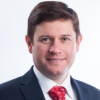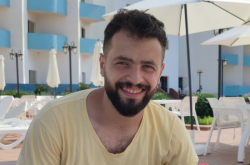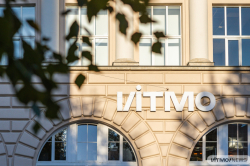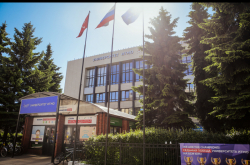The Times Higher Education ranking is based on thirteen indicators combined into 5 groups: Teaching, Research, Citations, International Outlook and Industry Income. ITMO's best result was in Industry Income which is a measure of income scaled against staff numbers and normalised for purchasing-power parity. It indicates an institution’s general status and gives a broad sense of the infrastructure and facilities available to students and staff. According to Ilya Kuftiryov, Director of ITMO's Rankings Research Center, this is a result of effective interaction between research laboratories with the economic sector.
«This is the very technological transfer that ITMO University is so focused on, and which results in increased income from R&D. We don't just use governmental financing effectively, but also raise funds from the corporate sector and earn ourselves, which proves that ITMO really is an entrepreneurial and innovative university», — comments Ilya Kuftiryov.

The high positions in the THE ranking are a result of the united work of the academic staff, students and the university's administration. ITMO's strategy of taking leading positions on the world research market, convergence of informational and photonic technologies, their translation into socially significant areas — from medicine and urban science to arts — were reflected in the World University Rankings.
«Even in an economic crisis, we continue to work on serious projects and always have several orders. Most of our academic staff are involved in this collaboration, we continue to broaden the range of areas we work on, and this starts to affect our educational tasks, as well. Still, we definitely don't plan on stopping now», — comments the Dean of School of Photonics, Vladislav Bugrov.
During the last three years, ITMO University showed an exponential increase in publication activity. For instance, ITMO became one of the leading participants of Project 5−100 according to the amount of publications in top-10 magazines indexed by Scopus (14%), and showed the highest rate for publications in international collaboration — 47.1%. Since 2011, the index for average citation of collaborative articles has increased twofold. In the Index of Rising Stars ranking, the Nature magazine acknowledged ITMO as a university that may well become one of the leaders among the modern scientific community. These positive dynamics were reflected by the THE ranking as well.
«ITMO University continues to move higher in international ratings, — shares Vladimir Vasilyev, ITMO’s Rector, — In the last three years, we’ve been around the 100th position in QS BRICS, even with all its methodology changing. In the QS rating „Emerging Europe and Central Asia“, we’ve moved 20 positions up and are now on 81th place, and in the Webometrics rating that has to do with internet presence we"ve rose from 1399th to 864th position worldwide and are now 6th in Russia. We plan to continue this strategy — to develop our academic profile in close collaboration with our partners from the industry, to increase the number of publications in magazines with a high impact-factor, to diversify our research and use it in solving socially important tasks — as in the end, we need to remember our main goal: all we do has to benefit the society and our country’s economy».
«The academic reputation of a university plays an important role in defining its position in Times Higher Education rankings. It includes the expert opinion of the community on the research conducted at the university, and this is really important. What's more, this indicator also reflects such things as citation of the staff's publications, R&D financing (including corporate sector), and training high-quality personnel. It is all based on open data that can easily be checked. ITMO entering the 351−400 position in the THE shows that we are moving in the right direction», — notes Alexander Atrashenko, Vice-Rector's Research Counselor.
Another essential indicator for THE is International Outlook, that also includes the percent of international students at the university. The Vice Rector for International Relations, Daria Kozlova notes that there is rapid growth in this direction.
«We are progressing, we are scaling up our potential and actively developing educational programs in English. Times Higher Education assessed the amount of foreign students according to data for December 31th, 2014 — then it was 10%. Now it’s 14.5% out of the overall amount of students. The results of World University Rankings 2016−2017 show that we are moving in the right direction and that Project 5−100 is really stimulating the development of Russian Universities», — believes Ms. Kozlova.
We'd like to add that the Russian presence in the THE increased almost twofold: 24 universities were included into the rankings, which is 9 universities more than last year. Russia's best university, Moscow State University has gone down the rankings, now being 188th in the overall rankings (it was 161th last year). Still, many universities show positive dynamics — for example, the Moscow Institute of Physics and Technology rose from 501−600 place to 301−350, Tomsk State University — from 601−800 to 501−600.
Amongst the newcomers to the rankings are National Research University — Higher School of Economics (401−500), then Lobachevsky State University of Nizhni Novgorod, National Research University of Electronic Technology, Novosibirsk State Technical University, Peoples' Friendship University of Russia, Samara State Aerospace University, I.M. Sechenov First Moscow State Medical University, Siberian Federal University, and also Saratov State University and Voronezh State University on 801+ positions. All in all, 16 universities that participate in Project 5−100 entered the Times Higher Education ranking.







